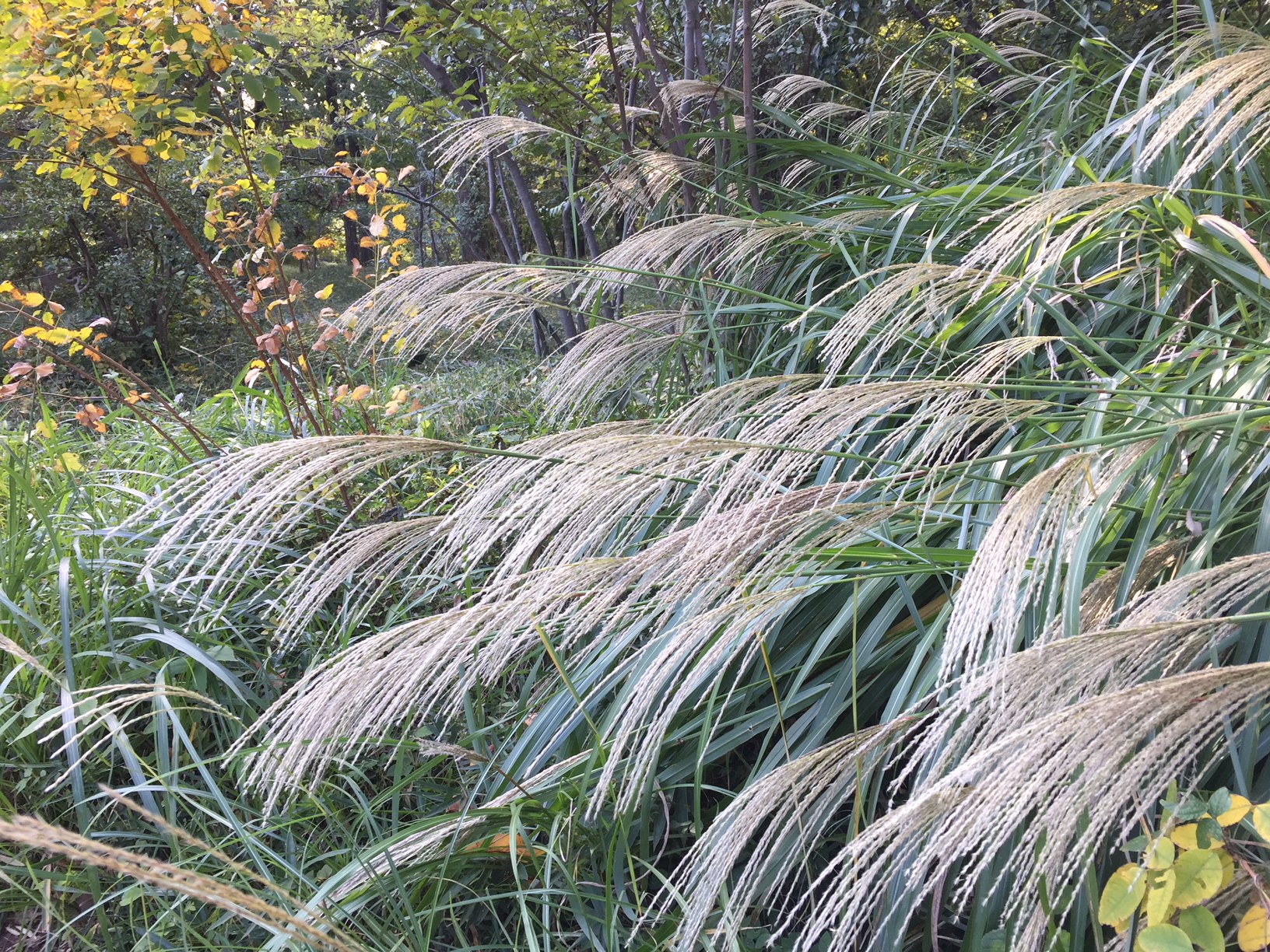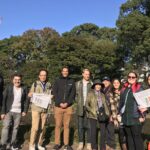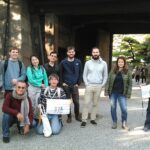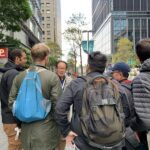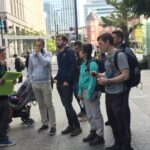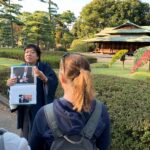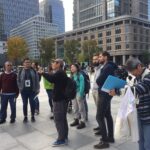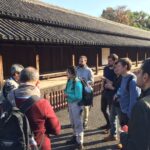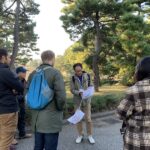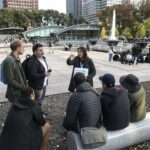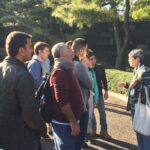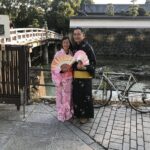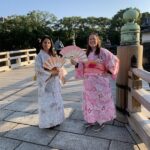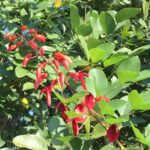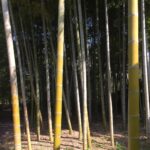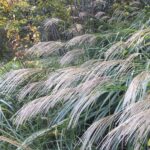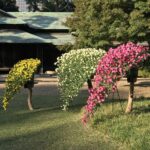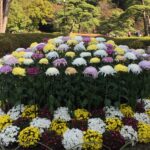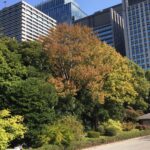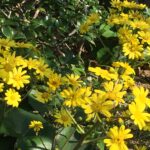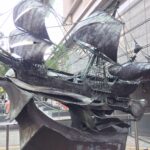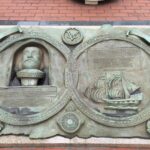Thank you for joining our tour to the East garden of the Imperial Palace on Nov 9th.
The weather was just perfect for a walking tour with typical fall blue sky and clean air in Japan, 17℃/63℉, no wind.
We welcomed 27 guests from Argentina, Luxembourg, Lithuania, U.K., Columbia, Germany, Singapore, U.S.A., Netherlands and Romania. The tour was run by 3 groups with a few guides.
This day, our tour course was forced a bit irregular because of National Festival to celebrate the throne of the new Emperor in addition to the fact that a part of The East Garden of the Imperial Palace was as banned in preparation for Grand Ceremony by new Emperor on Nov 14th and 15th. Even so, we had a lot of conversations with our guests while visiting the historical buildings of modern Japan and the ruins of Edo Castle, watching the deeper autumn gardens and flowers. One guest found a cherry blossom blooming at this season and told us. I believe all our guests enjoyed the tour, too.
There is Wadakura Bridge over a mort in the middle of our tour. The east side of the moat on the south side from this bridge was called “Yaesu River Bank”. And this place name “Yaesu” is derived from the name of one foreigner.
The foreigner’s name is Jan Joosten van Lodensteyn, who was a Dutch sailor in 17th century. He drifted to Japan as a sailor on the Dutch ship De Liefde in 1600, and later worked as an advisor and interpreter for Ieyasu Tokugawa who is the founder of Tokugawa Shogunate. He gained the trust of Ieyasu Tokugawa and was given a mansion along the moat of Edo Castle. His Japanese name was “Yayousu”, and it is said that this has become “Yaesu”.
Today “Yaesu” is the place name of the area on the east side of Tokyo Station, but originally the place name on the Imperial Palace side of Tokyo Station was “Yaesu”.
There was another foreigner who came to Japan with him. His name is British Adam Adams. He also served Ieyasu Tokugawa with interpreters and shipbuilding, and from his achievements he was given a territory in Yokosuka, Kanagawa Prefecture as Samurai. A character who became the protagonist of the novel “Shogun” by Mr. James Clavell. In 1980, it was made into a TV drama and a movie in NBC, USA.
They wanted to go home, but that hope was not fulfilled. In honor of their achievements, there are De Liefde and Jan Joosten van Lodensteyn statues around Tokyo Station.
After they were active, in 1639 Japan switched to a national isolation policy, and travel to and from foreign countries was limited for about 200 years. More than 150 years have passed since the opening of Japan, now over 30 million guests a year are visiting Japan from overseas. Many guests were watching the festival and the parade this weekend. If they saw this situation, they would be astonished.
Why don’t you do time trip to Samurai era with us while thinking about the fact that there were people who became “Samurai” away from home 400 years ago?
For more information about our tour, please visit our East Gardens of the Imperial Palace tour, Facebook, and TripAdvisor page!
(Posted by Toyo)

